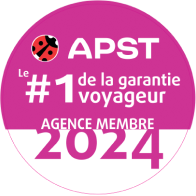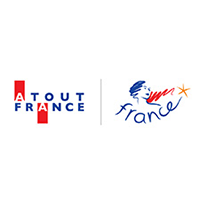Cambodia
Name: Koh Kong
Khmer Name: ខេត្តកោះកុង
Status: province
Population: 139 722 (2008)
Area: 11 160 km²
Koh Kong Province is a must-see destination during your trip to Cambodia. Here, you’ll uncover some of the country’s most treasured landscapes and natural wonders. During your stay, soak in the lively atmosphere along the coast.
History
From 1795 to 1904, Koh Kong was under the rule of the Siamese Empire. During the reign of King Mongkut, the province was known as Prachankirikhet, as it was administratively linked to the town of Prachuap Khiri Khan. In 1904, the region, along with the city of Trat, came under French Indochina. However, Trat was later returned to Siam, while Koh Kong remained part of French Cambodia.
After Cambodia was liberated from Khmer Rouge control in 1979, Koh Kong was relatively sparsely populated. In the following years, the province experienced rapid development due to Thai market influence and internal migration from other parts of Cambodia.
Today
Koh Kong is one of Cambodia’s largest provinces and a popular destination for tourists, with numerous attractions along its coastline and mountainous regions, including parts of the Cardamom Mountains—home to Southeast Asia’s largest rainforest.
Many travelers from Thailand stay overnight in the small port town of Koh Kong, just 8 kilometers from the border. Today, the province is a common entry and exit point for visitors crossing between Cambodia and Thailand. One of Koh Kong’s main draws is its legal casinos—the only ones in Cambodia—contributing to the province's fame.
Despite its popularity with tourists, the town of Koh Kong maintains a relatively calm and peaceful vibe. Visitors can explore the surrounding islets, enjoy its scenic rivers, or go hiking in pristine nature. In the evenings, however, the province comes to life with vibrant nightlife.
Irrawaddy dolphins and birdlife
Located between the Gulf of Thailand and the Cardamom Mountains, Koh Kong boasts one of Southeast Asia’s most intact mangrove-estuary ecosystems, which includes several protected zones. Many of these areas remain nearly untouched and unexplored due to their inaccessibility. The region is home to rare, exotic, and highly diverse wildlife, including dolphins, otters, the world’s smallest and rarest deer species, and several felines unique to Asia.
One of the highlights of a visit to Koh Kong is a boat excursion to observe the iconic Irrawaddy dolphins, which reside near the estuary mouth and around the mangrove forests.
The coastline is also a critical habitat for migratory shorebirds, with dozens of species recorded in the area. Among them is the globally renowned spoon-billed sandpiper.
Geography
Koh Kong is a coastal province located in the southwest of Cambodia, with its capital in Khemarak Phoumin. It is the only southern entry point into Cambodia from Thailand. The province also includes several small islands separated by the waters of the Gulf of Thailand. Its abundant wildlife is evident in its impressive waterfalls, and the province now features modern port infrastructure.
A significant portion of the province overlaps with the Cardamom Mountains, which include Cambodia’s largest national park and part of Kirirom National Park.
Spanning an area of 11,160 km², Koh Kong borders Pursat Province to the north, the Gulf of Thailand to the east and south, and the provinces of Kampot and Sihanoukville to the west. Covered in lush tropical forest, it forms the largest forested area in Southeast Asia. Visitors can also enjoy the country’s largest plains, vast rice paddies, and extensive farmland.
Population
Koh Kong has approximately 207,474 inhabitants, representing about 1.45% of Cambodia’s total population. The population density is roughly 18.6 people per square kilometer.
While Khmer is the primary language spoken, many residents also speak Thai. Some speak Chinese or Vietnamese, and English is widely used for communication, especially in tourism-related services.
Economy
Koh Kong’s economy is steadily growing, thanks largely to cross-border trade and infrastructure development.
The province’s economy is predominantly based on agriculture and its related sectors. However, commercial activity and services in tourism and hospitality are increasingly prominent. A trip to Koh Kong is generally affordable, with reasonably priced accommodations, food, and transport.
Climate
Koh Kong enjoys a tropical climate—hot and humid year-round. During the monsoon season, heavy rainfall benefits the region’s agricultural diversity. The average temperature is around 27°C, with lows dipping to about 16°C. December and January are considered the best months to visit, while April is typically the hottest.
How to get there
There are domestic flights from the capital, Phnom Penh, and Koh Kong is also accessible by boat from Kampong Som. Alternatively, you can drive from Phnom Penh and catch a boat from the town of Sre Ambel to the north or from Sihanoukville, via National Road 4.
By Bus
Several bus companies operate routes between Koh Kong and both Sihanoukville and Phnom Penh. Once isolated by rivers, the province is now connected by bridges, making road travel easier than ever.
By Boat
Boat trips from Sihanoukville to Koh Kong cost around 600 baht.
Getting around
In Koh Kong, the most common mode of transport is the motodop (motorbike taxi), typically working on a commission basis. If you plan to stay several days, motodops are the most economical way to explore the area.
What to do
- Enjoy lively evenings on Koh Kong’s coast
- Take a boat excursion to see Irrawaddy dolphins and other rare wildlife
- Discover the region’s unique and rare bird species
- Explore the vast, picturesque rice paddies stretching as far as the eye can see
Best times to visit
The ideal months to visit Koh Kong are December, January, and April.

